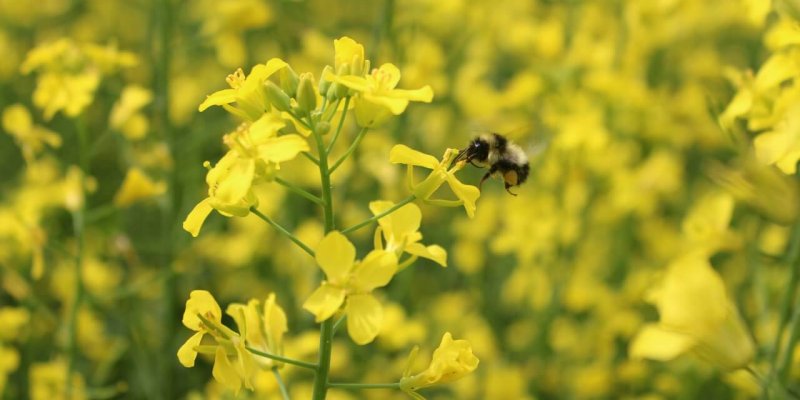Systemic insecticides such as neonicotinoids and sulfoximines can be present in the nectar and pollen of treated crops, through which foraging bees can become acutely exposed. Research has shown that acute, field realistic dosages of neonicotinoids can negatively influence bee learning and memory, with potential consequences for bee behaviour.
As legislative reassessment of neonicotinoid use occurs globally, there is an urgent need to understand the potential risk of other systemic insecticides. Sulfoxaflor, the first branded sulfoximine-based insecticide, has the same mode of action as neonicotinoids, and may potentially replace them over large geographical ranges.
Here we assessed the impact of acute sulfoxaflor exposure on performance in two paradigms that have previously been used to illustrate negative impacts of neonicotinoid pesticides on bee learning and memory. We assayed whether acute sulfoxaflor exposure influences (a) olfactory conditioning performance in both bumblebees (Bombus terrestris) and honeybees (Apis mellifera), using a proboscis extension reflex assay, and (b) working memory performance of bumblebees, using a radial-arm maze.
…
We found no evidence to suggest that acute sulfoxaflor exposure influenced bumblebee or honeybee olfactory conditioning or bumblebee working memory, even at the highest concentrations of exposure tested (250 ppb). Given the range of dosages we tested, which included positive controls that far exceeded levels likely to be found in the field, it is unlikely that acute sulfoxaflor exposure in adult bees will influence cognition after environmental exposure, at least with regard to olfactory conditioning and working memory performance.
…
A recent meta-analysis showed that chronic insecticide exposure can have larger effects on bee memory than acute exposure for adult bees, and so we cannot rule out that more prolonged exposure would have identified an effect of sulfoxaflor exposure. However, an acute dosage potentially mimics the exposure regime of a foraging adult bee in the field more closely, because individuals may forage on a range of different crops and flowers in addition to the treated crop, over an extended period of time.
Read full, original article: No evidence for negative impacts of acute sulfoxaflor exposure on bee olfactory conditioning or working memory































